
views
Entering a Hypnotic State
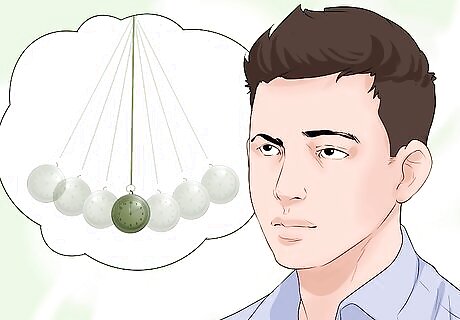
Be open to hypnosis. Studies show that hypnosis engages pleasant memories and reduces pain perception in the brain by 50%. Anyone can be hypnotized, as long as you're open to it. If you’re skeptical or uncomfortable, you won't be able to relax into what your hypnosis partner is suggesting. Hypnosis works better for people who are considered “highly hypnotizable." Someone who is "highly hypnotizable" has a high level of hypnotic ability. This basically means that they fully believe in the hypnotic process and do not have many doubts about hypnosis working on them. A person's ability to be hypnotized is usually classified as high, medium, or low.
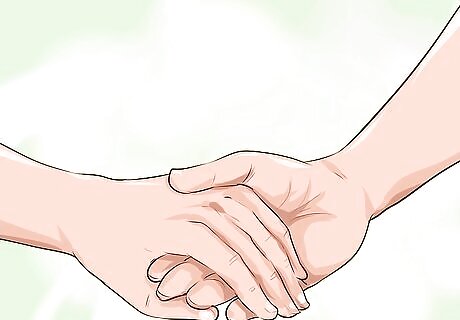
Find someone you can trust. The most important part of a hypnosis environment is trusting the person you’ve recruited. Opening your mind up to someone is a vulnerable thing, and you don’t want someone who might take advantage of this. Furthermore, if you don't feel like you can trust the person, the hypnosis isn't likely to be effective. Make sure you find someone who doesn’t like playing practical jokes. Even though you trust someone, if they enjoy playing tricks, chances are they may use your hypnotic state as a joke. This can induce mental stress. Keep in mind that it may also be difficult to be hypnotized by someone who's close to you—you might subconsciously be hesitant to fully open yourself to someone you know well. You may be called upon to hypnotize someone else to help them sleep. Try to be someone whom others can trust implicitly. Have your partner read up on hypnosis practices, like guided imagery and breathing exercises.

Clear your mind. High levels of adrenaline make it difficult to sleep, so mulling over your day’s anxieties right when you’re about to undergo hypnosis does not work. Sweep anxiety away by having your partner suggest things that trigger feelings of happiness. Your partner should ask questions to help you push fear, anxieties, and stress out of your mind focus instead on happy thoughts. For example, a good starting question might be, “What is an object that makes you feel relaxed when you touch it?” Don't worry about pushing all of your thoughts down—that can actually make it harder to relax. Instead, acknowledge your thoughts as they arise, then let them drift away. The questions your partner asks should help you reach a positive mental state. For example, your partner might ask you to visualize going to your favorite place. This place can be attached to a memory, or it can be a place you create purely from your imagination. Picture yourself walking to the place, opening the door, and stepping inside. It helps to picture your body being located in a soothing position, such as suspended in water, floating in space, and so on. If you can’t get to a relaxed state with guided questions, have your hypnosis partner describe in great detail a place that is peaceful, such as someone walking through a forest and finding a soft place to rest.
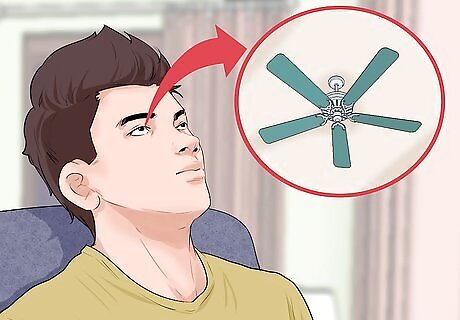
Choose a focal point. A focal point can be a memory or thought that has arisen from your hypnotist’s questions, or it can be an object in your room. Use this focal point to dismiss negative or wandering thoughts. Let your mind fill with the memory or object, dismissing all other thoughts and worries. For example, when a stray thought surfaces, repeat the name of the focal point object in your mind until the unwanted thought disappears. If your focal point is a memory, repeat the name of the place or people involved until the unwanted thought goes away. Verbalizing your mental experience will ground you in it and create a deeper zone of comfort.
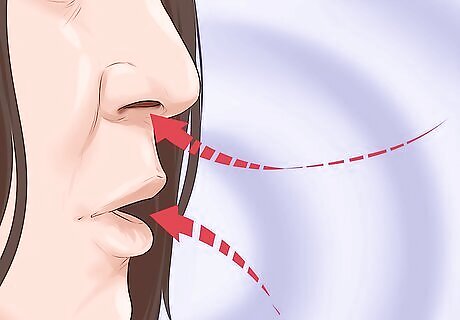
Practice breathing exercises. After your mind is settled in your favorite place, let your hypnosis partner guide you through breathing exercises. These help your body purge negative emotion and muscle tension, further relaxing you. One breathing exercise is to pretend you have holes in your feet. Imagine hot air blowing up through these holes, visualizing the air flowing up through your legs and filling your lungs. When you release the breath, imagine the air flowing back down through the same holes.

Enter a trance. The ability to “let go” in your mind is essential for entering a hypnotic state, otherwise known as a trance. This is why you’ve selected someone you trust and are very comfortable with. You feel suspended between wakefulness and sleep, often feeling like you are hovering above your own body. In a trance, you aren’t exactly unconscious of your surroundings, but you’re disconnected to the point of not being aware of them. In other words, your mind is awake while your body is asleep. The less mental activity you perform, the deeper your trance will be.
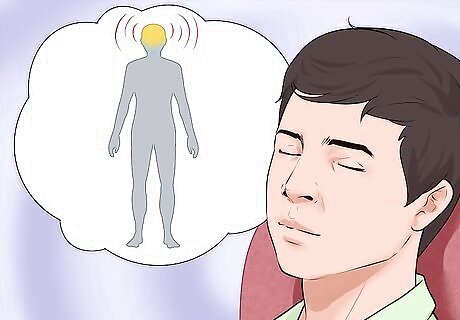
Disconnect your body from your mind. Bring your awareness inward. In a trance, you are able to use your imagination without being shackled by your inward critic. As you begin your journey toward a trance, you will probably hear a negative voice in your mind get louder. This is your "inner critic," and if you are not already a highly hypnotizable person, this critical voice will increase. This is because your doubts about hypnosis will try to stop the process from happening. Silence the negative voice by concentrating on your focal point. The critical voice should fade to the background as your trance deepens.
Falling Asleep

Allow yourself to get drowsy. Once you are in a hypnotic state, you should feel very relaxed and drowsy, like you’re about to fall asleep for a nap. Go with the feeling as you allow yourself to be verbally guided by your hypnotist to places in your imagination. At this point your partner should be quietly waiting for you to drift off to sleep. He or she should leave the room when you seem to be in a relaxed, drowsy state. Further intervention could keep you awake.
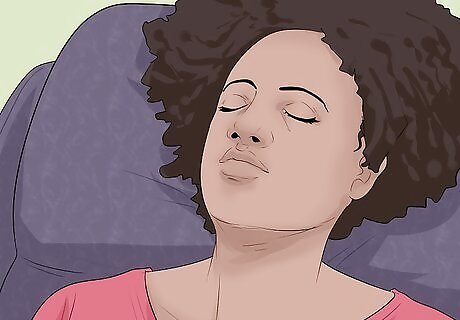
Start falling asleep. After establishing your mind in a visualized comfort zone and you feel that your mind is in fact disconnecting from your body, you're ready to begin falling asleep. The anxious thoughts that might have bothered your mind without hypnosis have been silenced, and as a result, it is likely your dreams will be less disturbing and your sleep will be deeper. If you're doing this in the evening, your body will already be feeling the need for sleep. Do not fight this feeling! It is an indication that the hormone melatonin is being released into your body, a facilitator in falling asleep. Stage one of sleep includes dozing off because our brain waves and muscle activity are slowing down. Hypnosis pairs perfectly with this stage because you are purposefully slowing down your brain activity and telling your muscle activity to cease. Understand that our bodies don't switch on and off between sleeping and wakefulness. It takes time for your brain to gradually shut down. That is why you are undergoing hypnosis.

Be aware it might not always work. If you struggle with insomnia, hypnosis might take some time to work. If you are not a highly hypnotic person, it may also take a few days of practice before you are willing to let go and get into a trance. If you follow a sleep routine, your body will learn to take its cues from your activities. Your brain will trigger sleep hormones and be more willing to fall asleep. If you don't have a hypnosis partner every night, you can walk yourself through some of the guided imagery alone, such as getting to your favorite place and doing the breathing exercises.
Creating a Relaxing Environment

Take a warm bath. Submerging your body in warm water actually causes a rise in skin temperature—resulting in a drop in body temperature—that triggers your mind for sleep. The key is to obey the drowsiness. Shortly after a bath, your skin will cool to the point of dropping your body temperature, and this sensation is what triggers the feeling of sleepiness. If you go to sleep right when you feel this way, you are more likely to stay asleep and sleep more deeply.

Dress in comfortable clothes. Part of effective hypnosis before sleep is being comfortable. Pajamas are a must. You need your mind to be calm, yes, but your physical surroundings are important for getting relaxed and staying there. If you’re wearing anything uncomfortable, this may distract you during hypnosis, defeating the purpose. Wear pajamas that are suited to the temperature of your room and your bed coverings. If you have a lot of blankets, wear lighter pajamas. You don’t want start sweating (or get cold) after you’ve fallen asleep.
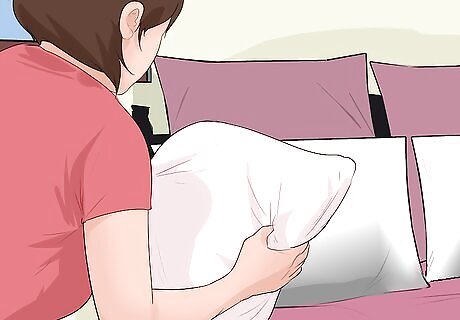
Make a cozy bed. Part of effective hypnosis is a sense of touch that triggers peace and calming. Make sure you’re lying down when you start. If your bed coverings are scratchy, hot, too firm, too soft, and so on, this can delay or even ruin the effect. You be triggered to go to sleep as soon as you lay down. Don’t use linens that will heat you up in your sleep. For example, jersey knit or flannel sheets are soft, but they tend to hold in body heat. Use a mattress that's just right for your back. One either too soft or too firm can cause back pain. Experts say that people sleep better on newer mattresses, and a good mattress is one that relieves pressure on joints.
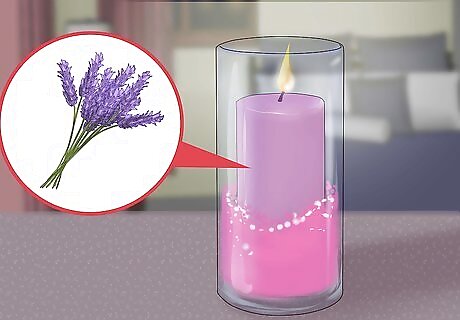
Use aromatherapy. The scent of lavender is known to help people fall asleep faster and sleep more deeply. You can add scent to your bedroom before a hypnosis session by diffusing an essential oil or lighting a candle. Lavender scent decreases blood pressure and heart rate. In several studies, people who sniffed lavender before sleep slept better, and infants cried less and slept better after a bath with lavender oils in it.
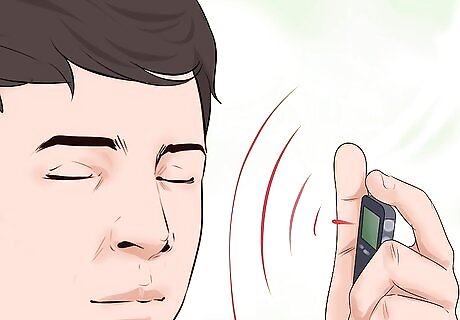
Listen to soothing sounds. There are many self-hypnosis audio recordings available on the internet. Even though you’re having someone else hypnotize you, having these soothing sounds in the background can enhance the effects of hypnosis.
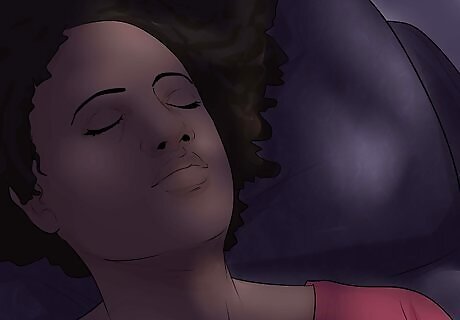
Dim the lights. Lights can interrupt sleep rhythms, not to mention make it difficult to fall asleep in the first place. Light triggers many chemical reactions in the brain, so dim lighting triggers your brain to shut down for the night. Eliminate lights during the night. If a street light overlooks your bedroom window, use blackout curtains to block it.


















Comments
0 comment